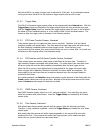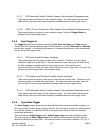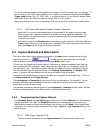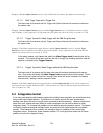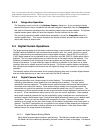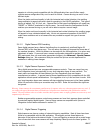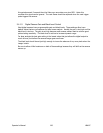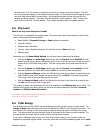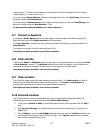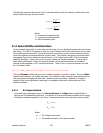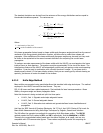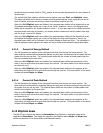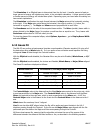Chapter 6 COMPUTATIONS
6.1 Computational Accuracy
Once you have mastered the skill of acquiring your laser beam's profile on the screen of the LBA-PC,
your next thoughts will usually be directed toward the accuracy of the quantitative results.
The degree of accuracy of the computed results will be based primarily upon two factors. The first, and
most significant, is the correct nulling of the background energy. The second has to do with optimizing
the presentation of the beam display.
The background energy nulling operation establishes the zero reference from which all computed
results are based. Failure to correctly null and periodically monitor the background energy will yield
inconsistent results. Excessive background energy levels will yield oversized beam diameters and
reduced magnitudes when energy relationships are compared.
The opposite effects will result if the background levels are excessively suppressed.
The LBA-PC is equipped with an auto calibration feature called Ultracal™. Ultracal will perform a
nulling operation that is significantly more accurate than that which can be manually achieved. The
Ultracal algorithm will also compensate for background noise and for camera shading.
The Ultracal™ processing feature is protected under
United States Patent Nos. 5,418,562 and 5,440,338.
Notice: We recommend that you allow both the camera and the LBA to warm up and reach thermal equilibrium
before performing calibrations. One hour is usually sufficient as a warm-up period (at least two hours if your
camera is a tube type). If the ambient air temperature is changing, then you might want to periodically recheck the
background energy levels to make sure they haven't been significantly altered.
6.2 Numerical Formats
The LBA-PC uses an 8, 10, 12 or 14 bit A to D converter to digitize incoming video. Each video frame is
then processed and placed into a block of memory called a frame buffer. During processing the LBA
converts all pixel intensities to a signed 16 bit fixed point value. Processing can consist of, Ultracal
baseline correction, Reference Subtraction, Gain Correction, Gamma Correction, Frame Summing,
Frame Averaging and Convolution. The 16-bit format is used for all processing except frame averaging
and frame summing. Frame averaging and summing uses a 32-bit format during the summing
operation, but returns a 16-bit result after the division.
This 16-bit format is the basis upon which all computational results are performed, and all data files are
created.
Operator’s Manual LBA-PC
128



